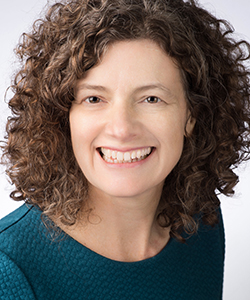Forward thinking, in the field and in the mind
Forward thinking, in the field and in the mind
By Tracy Crow
October 2010
Charlie Brown and his friends were critical to my early philosophical outlook, not to mention my understanding of mathematics education. I remember wondering how new math was different than old math. Was I doing new math? When would my teachers tell me it was time to ditch the old math? It was only much later when I was working in education that I started to grasp the differences in approaches to mathematics curriculum, by which time the new math was old, and the new, new math was causing its own controversies.
The original new math was part of the Sputnik era of education reform, which also included several new science curriculum initiatives, many funded by the National Science Foundation. More than 50 years later, we’re experiencing another era of concern over the U.S.’s ability to thrive and compete internationally, and we’re seeing renewed emphasis on strengthening education, particularly in mathematics, science, and related fields.
To answer Linus’ question, we can’t really solve new math problems with an old math mind. But the good news is that we can create new math minds, and new science minds, and new language arts minds, and not just for students but for teachers and school leaders as well. We’ve seen many schools and districts that are working to create new mindsets for educators with effective strategies and compelling visions grounded in data about what students need and research about what works. The research consistently highlights that effective professional learning is grounded in the subject matter areas for which teachers are responsible.
We have great examples in this issue of JSD. Read about a group of principals in Michigan who committed themselves to learn — or rather relearn — algebra as part of their effort to boost their instructional leadership capacity. In spite of their fears, they found themselves prepared to help teachers create rigorous learning opportunities for students (see p. 30). Explore how the Clark County (Nev.) School District established districtwide goals across hundreds of schools, thanks to leadership teams in mathematics (see p. 12). And meet educators in California who strengthened the academic language skills of their students and met critical student achievement targets as a result (see p. 24). You’ll find several other examples in this issue, and I would love to hear about more.
At NSDC, we realized that our mindset and our field were in the midst of a significant transformation. Looking forward, we could see significant challenges in professional learning that require urgency and efficiency. We determined that the name National Staff Development Council no longer effectively represented the work we do.
In making the transition to a new name, we knew we needed to articulate with clarity what the organization stands for. Given our commitment to our purpose, this step was simple. Our purpose — every educator engages in effective professional learning every day so every student achieves — drives our plans and our actions. We know that this same purpose drives our members as well.
With the name Learning Forward, we found a match between our identity and our aspirations. As the name implies, we are looking forward. We know the generations of educators to come will be the leaders who achieve our purpose. With learning as our core value and the promise of what lies ahead, we’re confident we’ll meet our challenges. Our members won’t settle for less.

Tracy Crow served as chief strategy officer for Learning Forward.
Recent Issues
LEARNING DESIGNS
February 2025
How we learn influences what we learn. This issue shares essential...
BUILDING BRIDGES
December 2024
Students benefit when educators bridge the continuum of professional...
CURRICULUM-BASED PROFESSIONAL LEARNING
October 2024
High-quality curriculum requires skilled educators to put it into...
LEARNING TO PIVOT
August 2024
Sometimes new information and situations call for major change. This issue...









